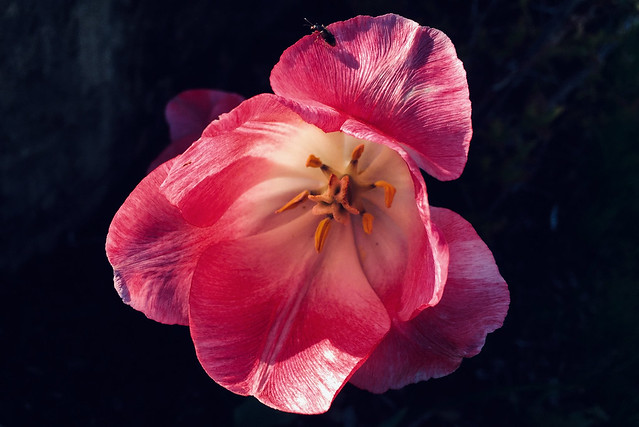|

Open to the Light
Amma Anastasia (500s CE) was an aristocrat in Emperor Justinian's court. She was widowed at a young age. Theodora, the emperor's wife, became increasingly jealous of Anastasia; so, the latter left Constantinople for Alexandria, Egypt. Anastasia built a monastery about five miles from Alexandria. She lived as a monastic, weaving cloth to support herself.
Theodora died, and Justinian began to pursue Anastasia to marry her. Anastasia fled to Scete, deep in the Egyptian desert. She met Abba Daniel, who helped her get reestablished away from the emperor. Anastasia began wearing men's clothing and moved into a cave about eighteen miles farther into the desert. Abba Daniel assigned her the identification the eunuch Anastasius. A monk was assigned to bring her bread and water regularly. No one else besides Abba Daniel her true identity.
Anastasia continued in solitude for twenty-eight years. Finally, nearing death, she sent word, by a potsherd set at the cave entrance, for Abba Daniel to come and bury her. Abba Daniel and the monk arrived to share final words and receive her blessing. She blessed both of them. Anastasia received the Holy Eucharist, and Abba Daniel extended her a final prayer of blessing. She, then, turned toward the southeast, stretched out her hands, and said, "God (or, Lord), into your hands do I commend my spirit." Next, she made the sign of the cross and died (ca. 567).
After the burial site was prepared, Abba Daniel gave the monk his garment and instructed him to place it on the "brother's" body. Only in reclothing the body did the monk discover the recluse had been a woman.
* * *
Anastasia's final words are from the Gospel of the Christian Scripture, the Gospel of Luke 23.46. In this passage, Jesus speaks, "Father, into your hands, I give my spirit." "Spirit" can be rendered "breath" or "life." The passage immediately notes, "And when he had spoken this, he breathed his last breath."
The utterance of Jesus and Anastasia have importance for us, for it is timeless wisdom. Jesus and Anastasia could speak those words at the door of death, for they lived those words prior. Neither of them would have been prepared for such a commitment apart from living in that spirit.
The entire life of those devoted to a wisdom path, be it called whatever, is a life of devotion to what "Father" points to. The spiritual life is an act of turning over ourselves to Something in which we all live, move, and receive our every breath. Christian contemplatives have historically referred to Abandonment to Divine Providence, and this act is akin to the offering of self we write of today.
And, as I have said before, this life is a preparation for death. We will all die, though we tend to live in a practical denial of death, holding aside our mortality as though an irrelevant theory. Still, we will all, with Jesus, Anastasia, and our loved ones who have already died before us, breathe our last breath. And all those who have lived in the spirit of self-offering are our wisdom ancestors.
Hence, it is only wise to live in light of our death. In whatever wisdom path we walk, it is incumbent upon us to live in the spirit of the words, "Into your hands, I give myself." So, we need not take this life too seriously, yet, not taking it lightly either. How unfortunate to come to the end and not have lived mindful of the brevity of this human journey. As the Buddha taught, the human realm is the best of all realms to wake up. Let us use all that enters our path to wake up and stay wakeful.
Would you find it beneficial to offer this prayer daily, one or more times, "Into your hands, I give myself"? Ideal times for this prayer, or a variant, would be on awakening in the morning and before sleep at night.
* * *
*© Brian K. Wilcox, 2021
*Brian's book, An Ache for Union: Poems on Oneness with God through Love, can be ordered through major online booksellers or the publisher AuthorHouse. The book is a collection of poems based on wisdom traditions, predominantly Christian, Buddhist, and Sufi, with extensive notes on the poetry's teachings and imagery.
|





